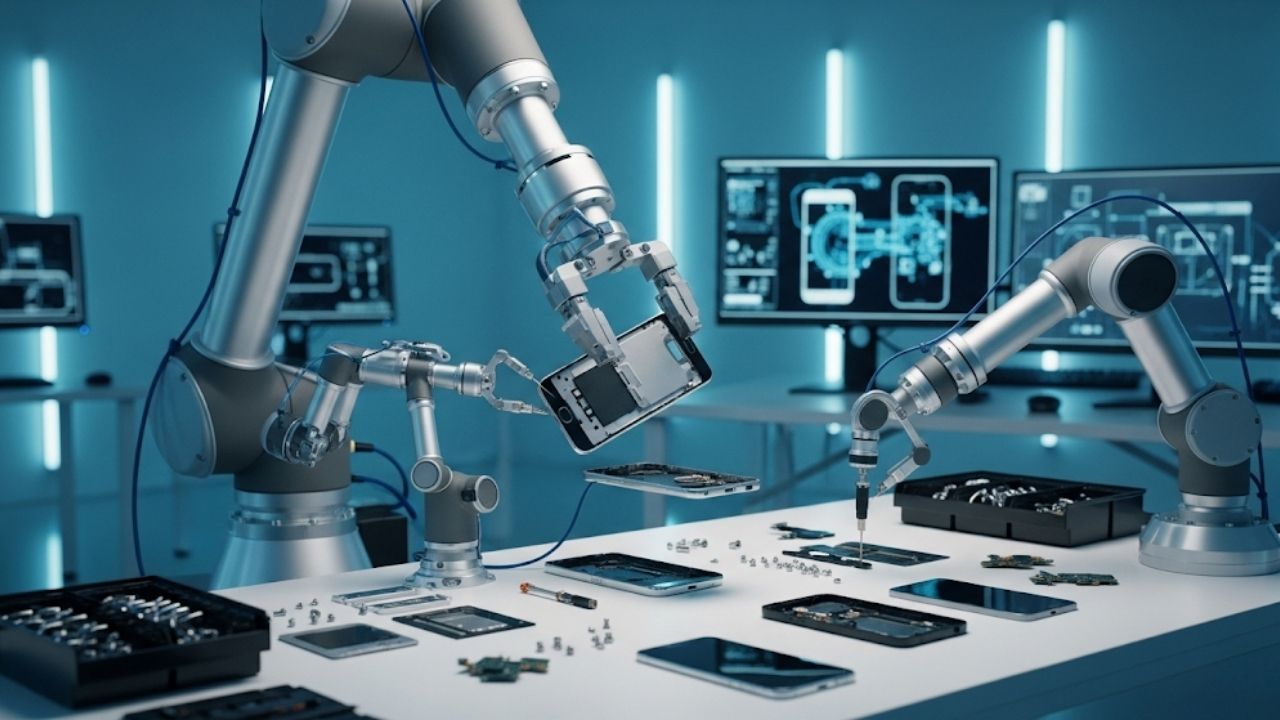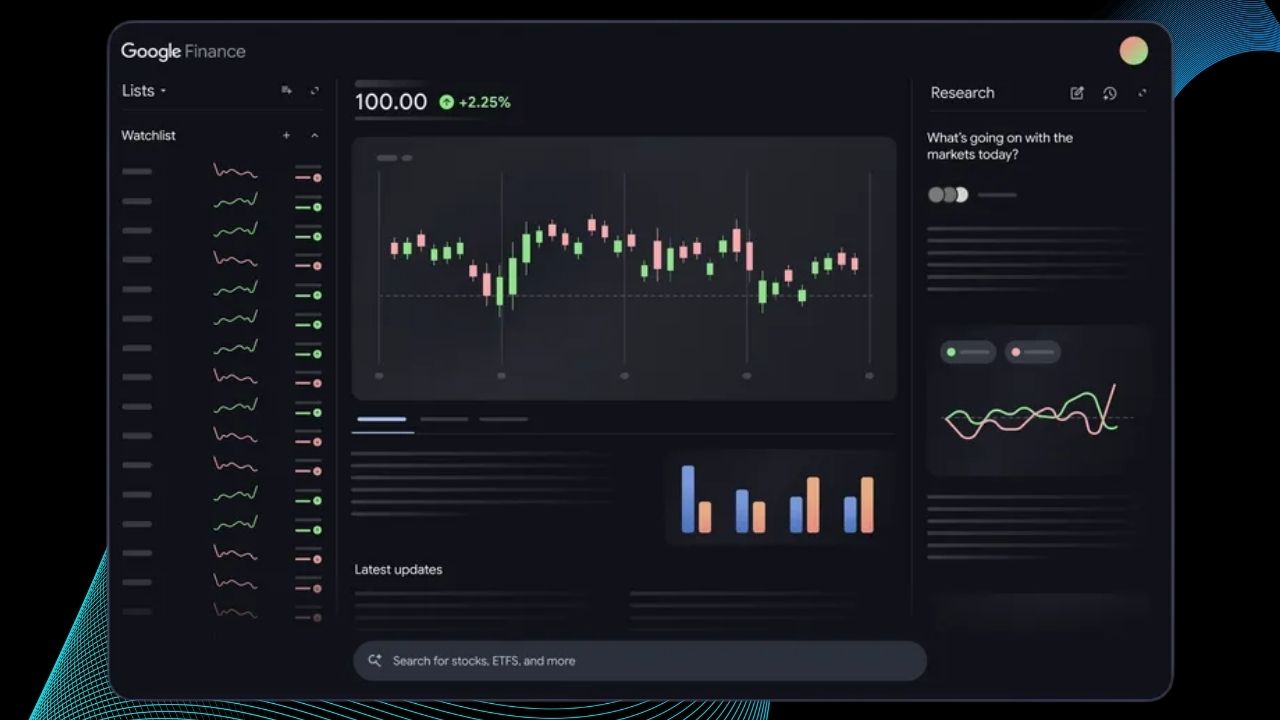NVIDIA Powers Europe’s Fastest Supercomputer: In June 2025, NVIDIA made history by powering Europe’s fastest supercomputer, JUPITER, with its revolutionary Grace Hopper platform. This breakthrough is more than just a technological marvel—it’s a catalyst for scientific discovery, industrial innovation, and a greener digital future.
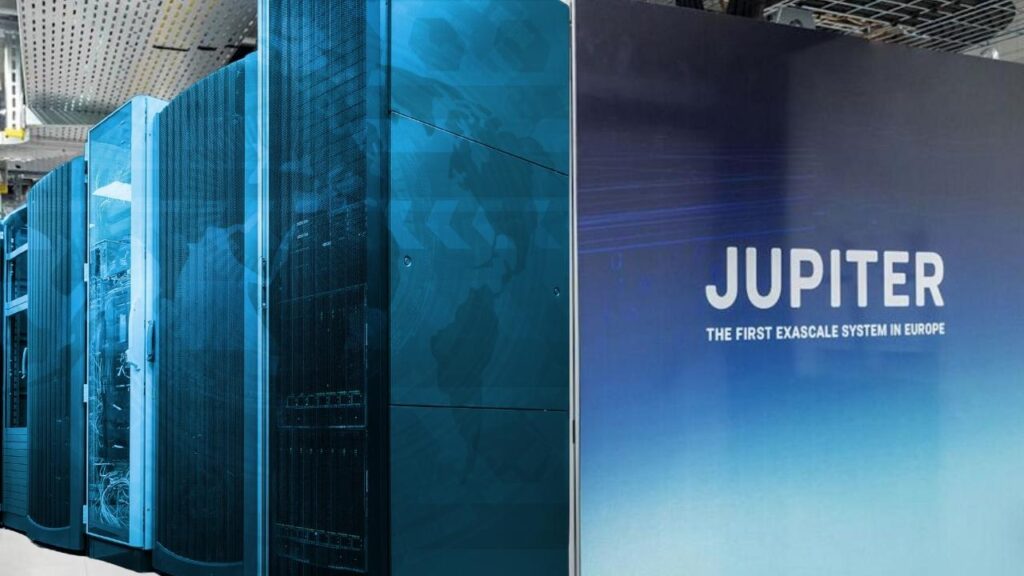
But what sets JUPITER apart from other supercomputers, and why is the Grace Hopper platform such a game-changer for Europe and the world? Let’s explore these questions in detail, using clear language and real-world examples that make sense to everyone, from curious students to professional researchers.
NVIDIA Powers Europe’s Fastest Supercomputer
| Feature/Stat | Details |
|---|---|
| Supercomputer Name | JUPITER |
| Powered by | NVIDIA Grace Hopper (GH200) Superchips |
| Compute Nodes | ~24,000 GH200 Superchips |
| Peak Performance (HPC) | 1 exaflop/s (FP64, double precision) |
| Peak Performance (AI) | 70+ exaflops (8-bit AI precision) |
| Energy Efficiency | 60 gigaflops per watt (among the world’s best) |
| Main Applications | Climate modeling, quantum research, biology, engineering, astrophysics |
| Location | Forschungszentrum Jülich, Germany |
| Consortium | EuroHPC Joint Undertaking, Jülich Supercomputing Centre, NVIDIA, Eviden, ParTec, SiPearl |
| Official Website | JUPITER at Forschungszentrum Jülich |
The launch of JUPITER, powered by the NVIDIA Grace Hopper platform, marks a new chapter for European science, industry, and innovation. With unmatched speed, world-leading energy efficiency, and the ability to solve problems once thought impossible, JUPITER is set to accelerate breakthroughs in climate science, medicine, engineering, and beyond. Whether you’re a student, a researcher, or a business leader, JUPITER offers the tools and opportunities to shape the future—one calculation at a time.
What Is JUPITER and Why Is It Important?
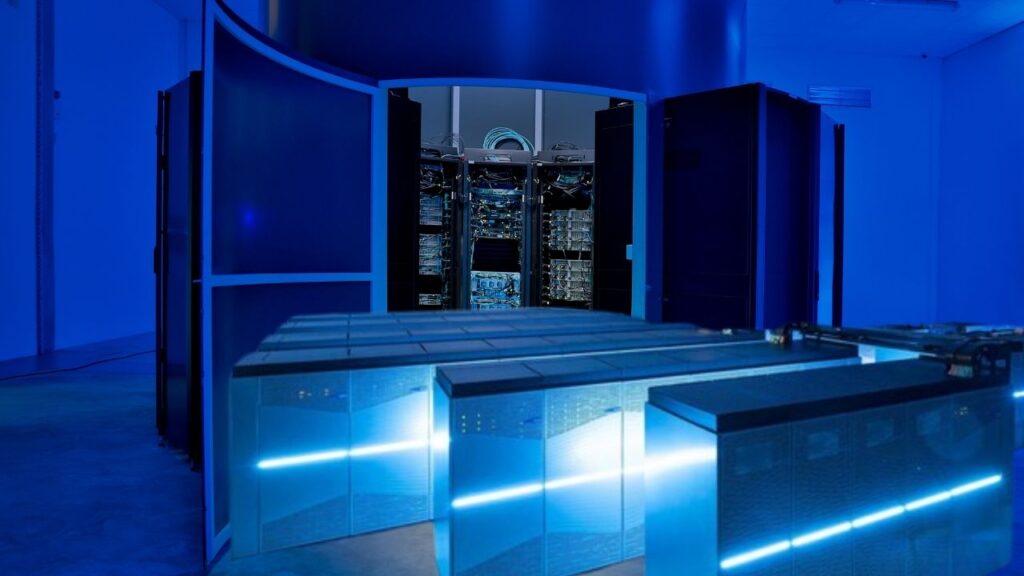
JUPITER is Europe’s first exascale supercomputer. In simple terms, this means it can perform more than a quintillion (1,000,000,000,000,000,000) calculations per second. For context, if everyone on Earth performed one calculation per second, it would take over four years to do what JUPITER can do in a single second.
Why Exascale Matters
- Scientific Discovery: Exascale computing allows scientists to simulate complex systems—like the Earth’s climate, the human brain, or the formation of galaxies—with far greater detail and accuracy.
- Artificial Intelligence (AI): JUPITER can train and run massive AI models, making it possible to solve problems that were previously out of reach.
- Industrial Innovation: Companies can use JUPITER to design safer cars, develop new materials, and optimize manufacturing processes—all in a virtual environment.
The Grace Hopper Platform: JUPITER’s Supercharged Engine
At the heart of JUPITER is the NVIDIA Grace Hopper Superchip (GH200), which combines a powerful CPU (Grace) and GPU (Hopper) into one tightly integrated unit.
What Makes the Grace Hopper Platform Revolutionary?
- Unified Memory: The CPU and GPU share memory, allowing data to move quickly and efficiently between them. This reduces bottlenecks and speeds up complex calculations.
- High Bandwidth: Each superchip offers up to 500 GB/s of memory bandwidth, enabling rapid access to large datasets.
- Energy Efficiency: The GH200 is designed to deliver maximum performance per watt, making JUPITER one of the greenest supercomputers ever built.
- Scalability: With nearly 24,000 GH200 superchips, JUPITER can handle the largest and most complex workloads in Europe.
How JUPITER Works: Architecture and Design
JUPITER is a modular supercomputer, meaning it’s built from many smaller units (modules) that work together as one powerful system. This design allows for flexibility, scalability, and efficient maintenance.
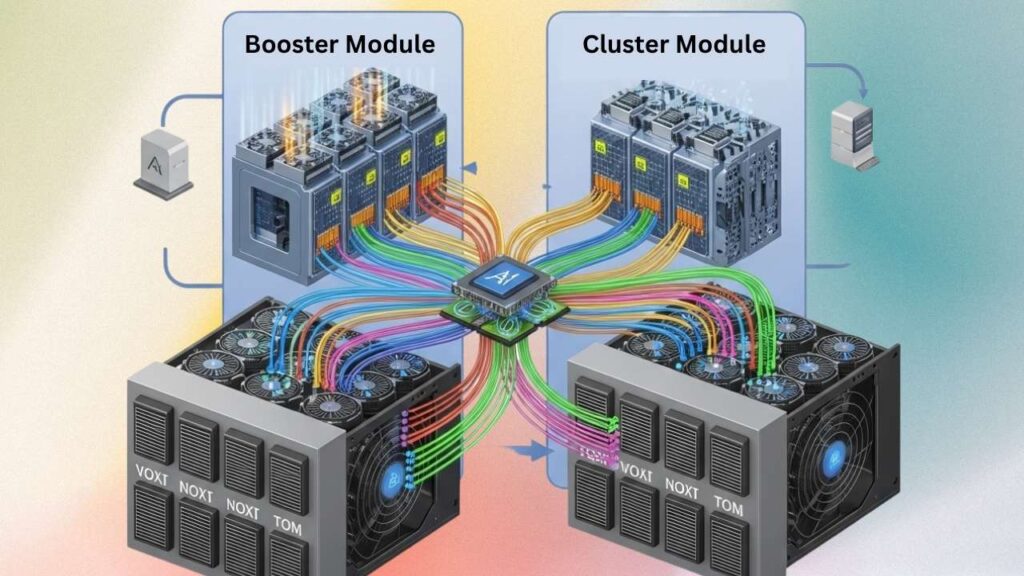
The Two Main Modules
1. Booster Module
- Purpose: Handles the most demanding calculations, especially those needed for AI and simulations.
- Specs: Around 6,000 nodes, each with four GH200 superchips.
- Performance: Delivers 1 exaflop/s for scientific computing and over 70 exaflops for AI tasks.
- Networking: Uses high-speed InfiniBand technology to connect nodes, ensuring fast communication and data transfer.
2. Cluster Module
- Purpose: Complements the booster by handling tasks that require lots of memory or different types of processing.
- Specs: Over 1,300 nodes, powered by European-designed processors.
- Special Feature: Extra-high memory bandwidth for data-heavy workloads, such as genomics or fluid dynamics.
Energy and Sustainability
JUPITER is not just about raw power—it’s also about responsibility. The system uses advanced liquid cooling to keep temperatures down and recycles waste heat to warm nearby buildings. This approach reduces its environmental footprint and sets a new benchmark for sustainable computing.
Real-World Applications: How JUPITER Makes a Difference
JUPITER’s power isn’t just theoretical—it’s already transforming research and industry across Europe.
Climate Science
- Weather Prediction: JUPITER can simulate global weather patterns at ultra-high resolution, helping meteorologists predict storms, droughts, and floods more accurately.
- Climate Change Research: Scientists use JUPITER to model how greenhouse gases affect the planet, guiding policy decisions and helping communities prepare for the future.
Healthcare and Life Sciences
- Drug Discovery: By simulating the interaction of millions of molecules, JUPITER speeds up the search for new medicines.
- Genomics: Researchers can analyze vast amounts of genetic data to understand diseases and develop personalized treatments.
Engineering and Manufacturing
- Virtual Prototyping: Car and airplane manufacturers use JUPITER to test new designs in a virtual environment, reducing the need for expensive physical prototypes.
- Material Science: Scientists can design new materials with unique properties, such as lighter metals or more efficient batteries.
Fundamental Science
- Astrophysics: JUPITER helps researchers simulate the formation of galaxies and black holes, deepening our understanding of the universe.
- Quantum Research: The supercomputer models quantum systems, paving the way for breakthroughs in computing and materials science.
Step-by-Step Guide: How to Access and Use JUPITER
If you’re a researcher, engineer, or innovator, here’s how you can leverage JUPITER’s capabilities:
1. Applying for Access
- Eligibility: JUPITER is open to scientists, industry professionals, and startups across Europe.
- Application Process: Submit a proposal outlining your project’s goals and computing needs. Projects are selected based on scientific merit and potential impact.
2. Preparing Your Workloads
- Optimize for GPUs: JUPITER’s power comes from its GPUs. Make sure your software can take advantage of parallel computing.
- Use Available Tools: The system supports a wide range of programming languages and libraries, making it easier to adapt your code.
3. Training and Support
- Workshops: Regular training sessions help users get the most out of JUPITER.
- Documentation: Comprehensive guides and technical support are available to assist with setup and troubleshooting.
4. Running Your Simulations
- Submit Jobs: Use the provided interface to upload your data and submit jobs to the supercomputer.
- Monitor Progress: Track your simulations in real time and adjust parameters as needed.
5. Analyzing Results
- Data Visualization: Use built-in tools to visualize your results and generate reports.
- Collaboration: Share findings with colleagues or partners, fostering collaboration across disciplines.
Professional Insights: Why JUPITER Matters for Careers and Industries
For professionals, JUPITER is more than just a research tool—it’s a platform for innovation, skill development, and career growth.
For Researchers
- Accelerate Discovery: Access to exascale computing means faster results and the ability to tackle more ambitious projects.
- Collaborate Globally: Work with leading scientists and institutions across Europe and beyond.
For Industry
- Competitive Edge: Use advanced simulations and AI to innovate faster and stay ahead of competitors.
- Reduce Costs: Virtual prototyping and testing save time and resources.
For Students and Early-Career Professionals
- Skill Building: Learn to use cutting-edge technology and software, making you more attractive to employers.
- Networking: Connect with experts and mentors in your field.
AI Just Got Smarter at Controlling Soft Robots — Here’s How It’s Learning to Move Like Humans
Turning Trash Into Treasure: How Microwaves May Be the Future of High-Speed Recycling
Do Solar Farms Hurt Your Property Value? New Study Reveals Surprising Results
FAQs About NVIDIA Powers Europe’s Fastest Supercomputer
What is an exascale supercomputer?
An exascale supercomputer can perform at least one exaflop (a billion billion calculations) per second. This power is essential for solving the world’s toughest scientific and engineering challenges.
How does JUPITER compare to other supercomputers?
JUPITER is Europe’s first exascale system and currently the fastest and most energy-efficient in the region. Its architecture and sustainability features set it apart from previous generations.
Can businesses use JUPITER, or is it just for scientists?
Both! JUPITER is open to researchers, industry, and startups. Its applications range from scientific discovery to industrial innovation.
How does JUPITER help with AI?
JUPITER’s architecture is optimized for AI, delivering over 70 exaflops for 8-bit calculations—ideal for training massive AI models and running complex simulations.
Where is JUPITER located?
JUPITER is housed at the Forschungszentrum Jülich in Germany, a leading European research center.
How does JUPITER stay energy efficient?
JUPITER uses advanced GPUs, liquid cooling, and heat recycling to maximize performance while minimizing energy use.
What kind of support is available for new users?
Comprehensive training, documentation, and technical support are available to help users make the most of JUPITER’s capabilities.

